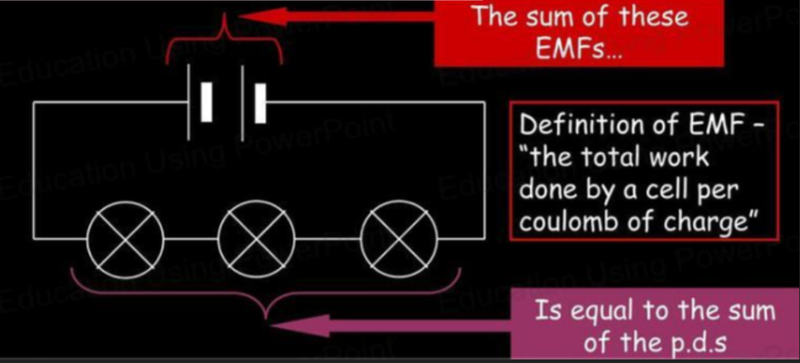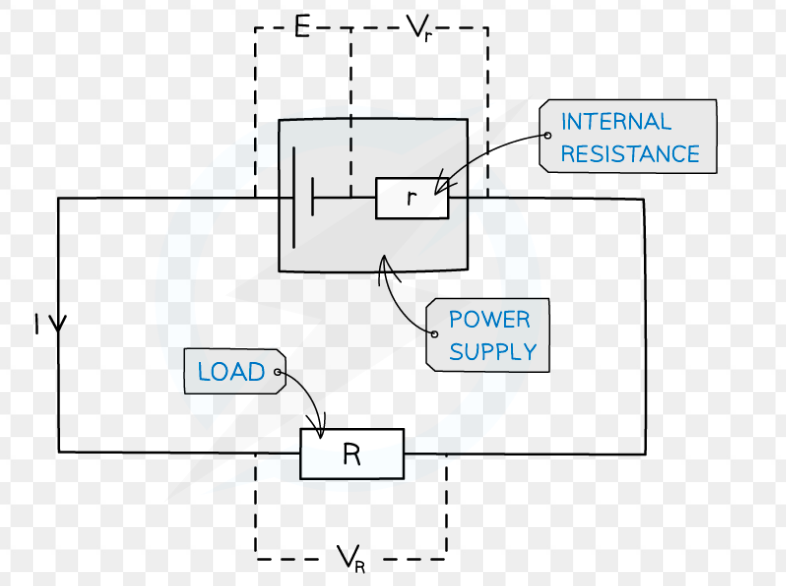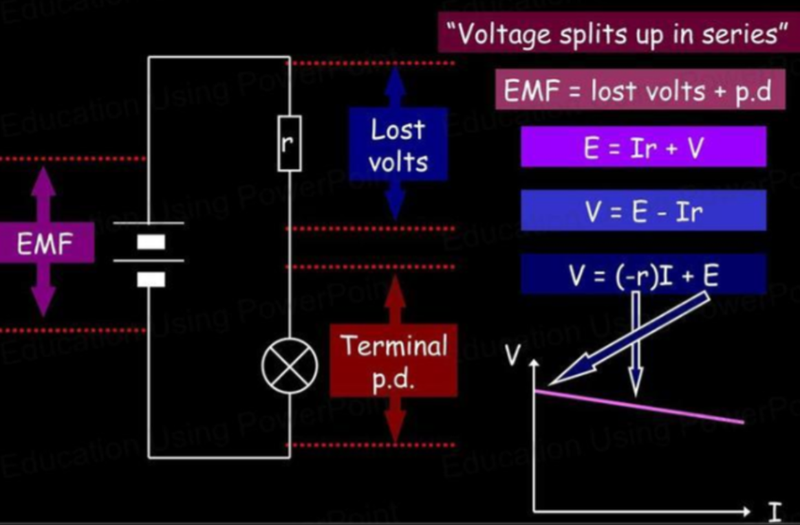What is Electromotive Force?
- Components like batteries and power supplies provide a force that pushes the current around a circuit.
- This is called the electromotive force, written as e.m.f. or simply EMF.
- Other components like bulbs and motors have work done to them by the current.
- The voltage across them is called the potential difference.
- In essence, electromotive force and voltage are the same thing, as they measure the same values, except voltage is the potential difference across the circuit, and the electromotive force is the potential difference in the battery.

- As the electromotive force is what pushes the current throughout the circuit, it should be equivalent to the total voltage in a circuit.
What is Internal Resistance?
- All sources of electromotive force behave as though they have a "built-in" resistor.
- This is called the "internal resistance" and can be thought of as a resistance to the flow of current inside the power supply itself.

- For simplicity, the internal resistance is often modeled as an in-series resistor as a part of the external circuit.
Measuring EMF and Internal Resistance

- In cases where there is internal resistance, the voltage throughout the circuit will be less than the electromotive force.
- This is because some of the voltage is "lost" to the internal resistor.
- Electromotive force is given as:

- Where ε is the EMF, I is the current, R is the total resistance of the circuit and r is the internal resistance.
- Total voltage will be less as it is calculated as V = I(R).
Sources